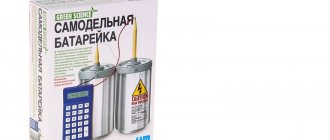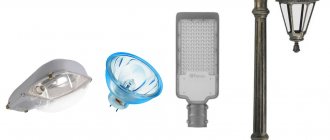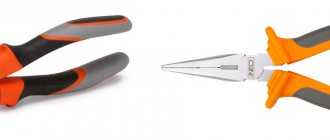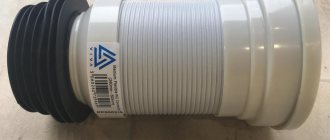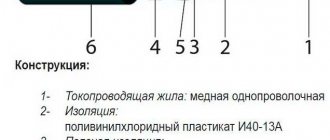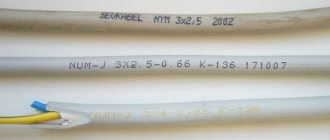The modern world is unthinkable without such necessary devices as a flashlight, radio, and remote control. The functionality of these devices is provided by special batteries produced by many companies.
Among the popular portable power sources, it is impossible not to mention one, the production of which began in the Soviet Union. Batteries of a similar format, which borrowed their name from their carbon-manganese predecessors, are still being produced.
Specifications
The crown is a set of six 1.5 Volt batteries connected in series. In total, the chain produces 9 volts. All elements are built into a metal or plastic case; in appearance, this device is a parallelepiped.
The most common varieties of this element are those with the following markings: 6f22, 1604, 6r61, 6lr61, mx1604, er9v, mn1604, am6, Corundum and others.
It should be noted that connecting in the wrong polarity is almost impossible. The plus is a plug, and the minus connector contact is the shape of a socket.
The main characteristics of a 9 Volt battery are:
- Height 48.5 mm.
- Width 26.5 mm.
- Depth 17.5 mm.
- Capacity. Up to 700 mAh.
- Voltage – 9 V.
- Weight is approximately 53 grams.
A few words about history
Krona batteries have a very rich history. They were first released back in 1956 by Eveready, today better known as Energizer. A little later, the monopoly of this company was destroyed, as a result of which the Krona battery appeared from the Kodak and Duracell brands and other manufacturers.
This power source received its now popular name already in Soviet times. At that time, manganese-carbon batteries of non-standard size were produced under the Krona brand - 26.5 × 48.5 mm in width and height. A little later, by analogy with this “format”, all power sources began to be called “Crowns”.
Today this battery is in great demand and indispensable for gadgets. It produces a much higher current than any other battery. Let's take a closer look at such a power source as the Krona battery.
Varieties and their features
Depending on the chemical compound, the following types of Crones are distinguished. A battery is a galvanic cell in which irreversible electrochemical processes occur. Recharging the products is strictly prohibited, as such actions can cause depressurization and leakage of harmful substances. Let's figure out what kind of Krona batteries there are.
Manganese-zinc salts. Similar batteries were mass-produced by American companies already at the end of the nineteenth century. They served as a power source for radios, automotive equipment, mining equipment, aviation and the navy.
They were replaced by salt ones: ammonium chloride solution was used as an electrolyte, and the electrodes were made of manganese and zinc oxide.
Now the scale of production of such elements is being reduced. The main disadvantage of batteries is the formation of white deposits in the battery compartments, which leads to rapid failure of the equipment. In addition, grains of salt that settle as a result of depressurization can cause harm to human health.
Alkaline. They are the next generation of batteries, also called alkaline. They differ from previous products in their higher cost and longer service life. The operation of these elements is possible even under intense loads.
Lithium iron disulfide. They have a solid positive electrode made of a material that is better known to us as pyrite. The performance of such batteries is maintained at temperatures down to minus forty degrees. Interest in them is growing from year to year.
Manganese-lithium. The electrode in such specimens is made of manganese dioxide. As a result of a chemical reaction, lithium oxide is formed.
Air-zinc. The operating principle is based on the reaction that occurs during the oxidation of zinc by atmospheric oxygen. A promising, environmentally friendly version of the product also has a large capacity.
Lithium thionyl chloride. They do not lose their performance properties at extremely low and high temperatures. Due to these characteristics, they are used in outdoor meters, surveillance systems, and electronic devices for military and aerospace purposes.
What is "Krona"?
Almost everyone knows what “Krona” is. This is a nine-volt battery with a relatively small electrical capacity. What it looks like is also no secret to anyone - a parallelepiped, at one of the ends of which there are two current-carrying terminals of different shapes. This difference allows the power supply to be connected to the device with the correct polarity. The smaller diameter terminal is the positive terminal, the larger terminal is the negative terminal. In addition, polarity markings are also found on the housing. Battery Dimensions:
- height (including terminals), mm – 48.5;
- width, mm – 26.5;
- depth, mm – 17.5.
Depending on the technology (see below), the battery can contain from 3 to 7 galvanic cells.
Why is it called that?
Now about the strange name. There is a more than strange opinion spread on the Internet that the name comes from the crown of a tree. They say that the battery contacts resemble the top of a tree, and some of them allegedly have a stylized top of a Christmas tree painted on them. Agree, such a strange tree with a thick trunk and a tiny forked crown can only be imagined by a heavy smoker.
Another equally ridiculous opinion is that the battery began to be called so because of its resemblance to a monetary unit. It’s just not specified whether it’s with a bill or a coin. But both of them are just an exact copy of a battery. Where such interpretations came from is, in principle, clear. If you open a dictionary, you can find only two definitions:
- Top of a tree with leaves.
- Currency unit.
For some reason, no one bothered to find out that this battery was produced by the Soviet enterprise Krona, and this name is simply a brand taken from the name of the production association. As for the drawing, it’s not a Christmas tree, but two lightning bolts.
Agree, it looks more like lightning than the top of a Christmas tree
Initially, the battery was a salt battery. Later, with the development of appropriate technologies, alkaline ones with twice the electrical capacity appeared.
Other possible names and markings
At the same time, the same enterprise began producing batteries under the Korund brand, which were only alkaline. The size and output voltage of products from both brands are the same.
Important! Today, real “Kronas” are not produced, but their place has been taken by “Cosmos”, “Sputnik”, “Our Strength”, etc. of the same standard size and output voltage.
As for foreign manufacturers, there are a lot of companies producing batteries of a similar size, including Energizer, GP, Duracell, etc. All of them go under different trade names, but, paying tribute to the very first battery of this type, we call them “Krona batteries.” "
Today, in addition to the classic salt and alkaline Kron, the industry produces power supplies of the same size and output voltage, but manufactured using different technologies:
- Lithium iron disulfide, 6 elements.
- Manganese-lithium, 3 elements.
- Zinc air, 7 elements, before use it is necessary to depressurize the case - break off the thin plastic that sticks out between the contacts.
- Lithium thionyl chloride.
As for labeling, there are no less varieties of them than the brands of the batteries themselves:
- 1604, 6F22, 6R61 (salt);
- 1604A, 6LF22, 6LR61, MN1604, MX1604 (alkaline);
- PP3, E-Block, 9V Brick Battery, AM6, 522, 6AM6, CR-9V, ER9V (lithium).
Is it a battery or a rechargeable battery?
If we talk about the real “Krona”, then, in fact, it is a battery of galvanic cells, that is, a non-rechargeable battery. It ran out of charge and threw it away. But today there are a huge number of rechargeable batteries that are the same size but may have slightly different output voltages.
Expert opinion
Alexey Bartosh
Specialist in repair and maintenance of electrical equipment and industrial electronics.
Ask a Question
Healthy! The salt “Krona” is perhaps the only battery that can be recharged, although the manufacturer does not recommend this. If you do this periodically, without waiting for a complete discharge, the service life of the power source can be tripled.
Krona batteries
The main difference between rechargeable batteries and regular batteries is the ability to recharge them. That is, they can be charged and discharged for a limited number of cycles. The Krona battery is charged using a special charger for this size, connected to the electrical network.
Ni-Cd. Nickel-cadmium batteries have a capacity of 120 mAh. Withstands more than 1000 recharge cycles. Due to their affordable price, they are widely used.
Ni-MH. The capacity of nickel metal hydride cells is in the range of 170-300 mah. Safe for disposal, does not contain heavy metals.
Li-ION. Efficient products that stand out for their performance. The capacity of lithium recharge cells varies from 350 to 700 mph. The most promising of those listed, however, work efficiently only at positive temperatures; at negative temperatures they begin to sharply lose capacity.
Li-Po. The latest invention that can be found on store shelves today. The operating principle is based on pulse conversion. The case has a built-in battery that can be recharged from any 5 Volt source, for example, from a USB port. Does not negatively affect the operation of sensitive equipment: radio microphones, receivers.
How much is a crown worth?
The price of this battery varies greatly. It will be different in each store. Most often, the higher the capacity of the power supply, the more expensive it is.
Approximate prices:
- A 650 mAh rechargeable crown battery will cost 600 rubles.
- GP has a price from 60 rubles.
- Varta Superlife from 70 rubles.
- Space from 43 rub.
- Samsung Pleomax 6F22-1BL, price varies from 70 – 150 rubles.
- Fine Power (6LR61 – KT-1151) – 85 – 160 rub.
- Smartbuy – 45 rubles.
Thus, from the above list it becomes clear that the price range is very wide. And 1 crown 9b can cost differently. If you purchase 20 CZK, there may be a discount. Price information was taken from online stores.
Where is the Krona battery used?
The scope of application of Kron is very extensive. They are suitable for devices operating at a voltage of 9 V, these are:
- control panels;
- radios;
- radio-controlled children's toys;
- multimeters;
- stun guns;
- dosimeters;
- GPS navigators;
- autonomous fire detectors;
- some medical devices.
In general, the battery is used in those areas where its advantages are invaluable. The advantages include:
- excellent performance;
- reliability and efficiency;
- light weight, compact dimensions;
- charge that lasts for a long period;
- environmental friendliness.
How to charge Krona
To charge Krona batteries, homemade units or factory devices are used. Before charging, the type of design is checked; information about charging capabilities is indicated on the case. Alkaline or alkaline cells must not be charged; discharged batteries must be disposed of.
Via USB
The equipment user can assemble a charging unit based on a USB plug:
- Separate the contact pad from the faulty Varta Energy element or analogue.
- Connect the contacts to the USB standard connector. When switching, polarity is observed, taking into account the peculiarity of installing the plate on the battery being charged. The negative signal is applied to the barrel plug, and the positive cable is soldered to the crown-shaped contact.
- Insulate connection points with heat shrink tubing.
- Connect the product to the battery; the USB plug is placed in the corresponding connector of the personal computer or laptop. Since the design of the unit does not provide for charging indication and current regulation, it is recommended to use a homemade design in case of emergency.
Charger
To charge Krona standard batteries, standard chargers designed for 2 cells are available. There is combined equipment that allows you to additionally install AA or AAA batteries. On the body of the charging units there are control indicators that display the charging progress.
How long does Krona charge?
When using an automatic charger, capacity replenishment stops when the standard voltage at the terminals is reached. There is a control indicator on the equipment body that turns on when charging is complete.
How to check the charge
To check the state of charge, use a voltmeter or test device. The probes of the measuring equipment are connected to the positive and negative terminals (observing polarity). The display or analogue scale will show the voltage value. If the parameter differs from the nominal value towards a smaller value, then the Krona battery must be charged.
Do-it-yourself charging for the Crown
A homemade charger is assembled on the basis of a power supply from phones or photographic equipment; it is recommended to use devices that provide an output voltage of no more than 5 V. A contact pad from a failed Krona battery is soldered to the outputs. An electronic circuit with a transformer is mounted in a housing of a suitable configuration. The battery is connected to the pad, and then the power supply is connected to the AC mains.
USB charging circuit for Krona battery.
No tags for this post.
How to charge a Krona battery
Chargers available on the electrical goods market are designed to charge the battery Krona. Such devices differ in their capabilities and power ratings. However, you can make them yourself: craftsmen make such devices from cheap Chinese chargers for mobile phones.
The battery is charged with a current of 10-20 milliamps, the limit is 40 mA. The charging time is calculated using the following formula:
Charging time (in hours) = Coefficient. multiply by the capacity (in mAh) divided by the charging current. The increasing factor is selected in the range from 1.2 to 1.6 depending on the value of the charging current. The lower the current value relative to the capacitance, the greater the coefficient.
Important! You can only recharge the rechargeable Krona, that is, only when the battery is not a battery. A special designation on the body of the model indicates this. It indicates the capacity and the words “rechargeable” .
Krona battery test
I have always been interested in how expensive batteries differ from cheap ones and how big the difference is between salt and alkaline batteries. I tested 12 Krona batteries and am sharing the results. In 2014, I organized a “Grand Battery Test” (https://ammo1.livejournal.com/573394.html), testing 255 AA and AAA “finger” and “pinky” batteries. In 2022, I did a test of cheap AAA batteries (https://ammo1.livejournal.com/931980.html). In 2022, another test of AAA batteries (https://ammo1.livejournal.com/1059406.html).
I've been wanting to test many types of batteries for a long time, and now I've started this big undertaking. The first thing we decided to do was test the Crowns, because before the test I didn’t even know approximately how much energy they provide.
The Krona battery has a nominal voltage of 9 volts and contains six 1.5-volt cells inside.
Salt “Crowns” are called 6F22, they have a metal body and six “tablets” inside. The initial voltage of such a battery is about 10 volts.
Alkaline “Crowns” are called 6LR61, they have a plastic body and inside are six cylindrical AAAA elements. The initial voltage of such a battery is about 9.6 volts.
For testing, a modified EBD-USB+ device was used in voltage recorder mode. It connects to a computer and writes the exact battery voltage to a file every two seconds.
The device has a built-in electronic load and a current measurement function, but I did not use them: the current is measured with an accuracy of 1 mA, which in this case is not enough, and it is better to use a constant resistor as a load for the Kron so that the discharge current decreases as the voltage supplied by the battery drops.
A resistor with a resistance of 234.0 Ohms was used as a load (the resistance was measured with an accurate multimeter), and the current during the discharge process dropped from 40 to 23 mA.
It took from 6 to 22 hours to discharge one battery.
Manufacturers indicate a shelf life of 3 years for Krona salt batteries, and from 3 to 10 years for alkaline batteries. The test involved five models of “fresh” batteries (3 alkaline, 2 salt), two alkaline batteries that were about to expire, a salt battery that had recently expired, and an alkaline battery that was released in 2013 and expired in 2016.
This is what the discharge curves of the tested batteries look like.
It is immediately obvious that something is wrong with the Era and Videx batteries. “Era” is alkaline, it had an expiration date until 09.2020 (no release date), but the initial voltage is only 8.76 V. It looks like I just got a defective one. “Videx” salt, released in October 2016, expiration date until 10.2019, that is, six months expired. Initial voltage 9.73 V.
The yellow, nameless battery from Auchan expired three and a half years ago, in 2016. It produced less power than other alkaline batteries, but not as little as you might expect. Its initial voltage is also slightly below normal - 9.19 V.
Interestingly, different batteries behave completely differently. Some are smoothly discharged to the end, while others are smoothly discharged up to a certain point, and then the voltage on them drops sharply.
Results when discharged to 5.4 V (each element discharged to 0.9 V).
The best alkaline battery (it turned out to be a cheap Ergolux for 90 rubles) gave 4.38 Wh.
The minimum energy capacity of “fresh” alkaline batteries for Trophy is 3.74 Wh (15% less than the leader).
A cheap battery from Auchan, which is already seven years old and whose shelf life expired three and a half years ago, gave 3.14 Wh of energy, which is only 16% less than the new Trophy.
New salt batteries provide 0.86-1.03 Wh of energy, that is, 3-5 times less than alkaline ones.
The load of 40 mA for salt “Kronas” is too high (however, the radio microphone I have, powered by the “Kronas”, consumes exactly 40 mA), so I bought another Kodak and Camelion batteries and carried out a second test, using a resistor as a load 397.4 Ohm (discharge current from 23 to 14 mA).
The graph shows that salt batteries work much easier under such a load.
In this mode, salt batteries provide significantly more energy. The Kodak battery gave 1.26 Wh (in the first test it was 0.86 Wh), the Camelion - 1.3 Wh (in the first test 1.03 Wh), and the Camelion clearly withstands a larger load better.
All testing data can be viewed in the Excel file krona.xls. There are discharge results up to 4.2 V (0.7 V on each element), initial voltages and weights of all batteries, production dates, barcodes.
Of course, in order to draw general conclusions, the data from one, not very extensive test, is not enough, but the following points can already be highlighted:
• Like other batteries, the difference between different models of batteries of the same chemistry is not very large and is unlikely to exceed 30%.
• Krona salt batteries provide 3-5 times less energy than alkaline ones. They can be used in devices with low power consumption (less than 25 mA), but in devices with higher consumption the difference from alkaline will be even greater.
• There are Krona batteries with high self-discharge. To check the battery, it is advisable to measure its voltage. For a new alkaline battery it should be above 9.3 volts, for a salt battery it should be above 9.9 volts.
• Alkaline batteries that have expired can still be used, although they will provide less energy than new ones. The condition of such a battery can be determined by measuring the voltage.
© 2022, Alexey Nadezhin
Popular manufacturers and their features
Particularly popular in our country are products known to us under the following brands:
- Energizer. High-quality items produced for over 50 years.
- Duracell. Retains charge, is productive and durable.
- Varta. Has an increased service life.
- G.P. Some models of this brand have the highest power rating.
- Robiton. Has excellent capacity.
- Camelion. Ensures stable operation of the powered device over a long period.
- Space. Produced by a domestic manufacturer, it competes with foreign analogues.
Specifications[ | ]
- Dimensions: 48 mm × 26 mm × 17 mm.
- Weight is usually about 53 grams.
- Voltage - 9.
- The typical capacity of an alkaline battery is 625 mAh.
The Krona size battery has a capacity (according to the passport) of 0.5 Ah.
There are also batteries of this size. With a nominal operating voltage of 8.4 V, immediately after charging they can have a voltage of 11.5 V or higher for a short time, which is due to the characteristics of the nickel-metal hydride batteries that make them up.
Rechargeable batteries 7D-0.125
(7D-0.1, 7D-0.11) Soviet-made (diameter 24 mm, height 62 mm, weight 53 g, nominal capacity from 100 to 125 mAh, nominal voltage 8.75 V), compatible in pin shape with “Krona”, had a plastic cylindrical body and consisted of nickel-cadmium disk batteries D-0.125, D-0.1, D-0.11. Their dimensions are slightly larger than the standard Krona, and many Soviet small-sized radios were made with this in mind. Some receivers (for example, “Selga”[1]) were sold complete with such a battery and charger, and the pocket receivers “Mir”[2] of 1962 and “Sokol”[3] of 1963 had a built-in transformerless charger.
Conventional disposable Krona batteries, unlike other types of chemical batteries, allowed a limited number of recharges, although this was not recommended by the manufacturer, so charger circuits were published in many magazines and books, for example, in the 1977 Encyclopedia of Young Technicians with a special form of current. Such schemes had some popularity due to the scarcity of batteries.
What to look for when choosing
When choosing the right copy, it is important to pay attention to the following characteristics of the product:
- Rechargeable. The battery provides an opportunity to save money, because to restore functionality it is enough to connect it to the network via a charger.
- Manufacturer country. Products manufactured in China, even under a well-known brand, are not always of high quality.
- Type of electrolyte used. The battery life depends on this parameter.
When purchasing a product, you should check the production date. A battery that has been lying on a store shelf for a year loses about 20 percent of its capacity, so it is better to refuse such a purchase. Experts advise not to buy batteries for future use; it is better to buy them when necessary.
Still have questions about Crohn's or have something to add? Then write to us about it in the comments, this will make the material more complete and accurate.
Charging rules
Despite the fact that manufacturers of power supplies often write that batteries of this type are disposable and cannot be charged, folk craftsmen have proven exactly the opposite. How can I charge a disposable Krona battery? First of all, you need to make a reservation - this is done at your own peril and risk, since if the voltage is selected incorrectly, then such a battery can “delight” its owners with an unforgettable fireworks display. So, first of all, we determine the charging current of the battery, for which we divide its capacity by 10 (150/10 = 15 mA/h). The charger should not exceed 15 volts. Currently, many high-quality Chinese-made blocks are produced, where both the current strength and voltage are regulated, so there should not be any special problems with this. Using this method, Krone can extend its life by two or even three cycles. Considering the fact that it takes quite a long time to discharge, this is already a very good result. But it should be borne in mind that if the elements inside the battery are dry, then it will no longer be possible to charge it again. But, unfortunately, only an “autopsy” can determine this.
When saving on recharging the Kron, do not forget that the savings should be within reason; you should not charge disposable elements more than 2 times!
